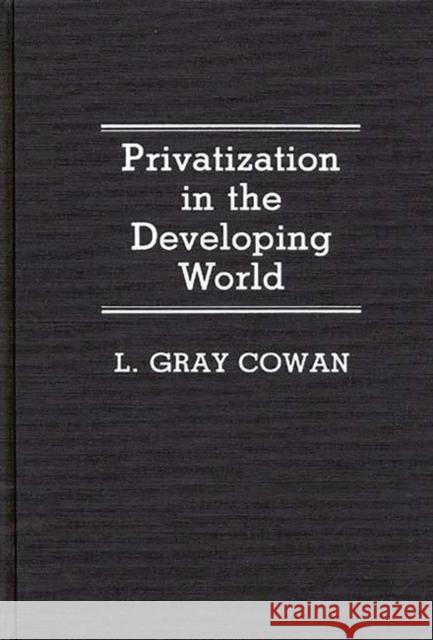Privatization in the Developing World » książka
Privatization in the Developing World
ISBN-13: 9780313273308 / Angielski / Twarda / 1990 / 160 str.
Grave financial woes swamping many developing world nations have spurred government interest in divestment as a means of reducing the role of the state in economic activity. Gradual ideological change in nations freed from colonial rule and pressures for reform applied by bilateral and international donor agencies have led to a growing acceptance of the trend toward privatization as a means to achieve both higher productivity and lower costs and to reduce the financial burden that subsidy costs to money-losing industries place on developing nations. L. Gray Cowan has created a how-to book for privatizing not only industry but also agriculture and services provided by the governments in developing world nations. "Privatization in the Developing World" focuses specifically on the privatization process with in-depth discussions, including preparing firms for disposition; making realistic, market-based valuations of the industries to be sold to private buyers; developing alternative methods of carrying out the sales; and creating more sophisticated finance packages for the privatization transaction. Both timely and readable, this handbook will enable officials of developing world states to initiate privatization strategies and to develop their own plans with the help of local civil servants.
Following an introduction that provides background material relevant to the concept of privatization and the failure of state-owned enterprises, five chapters supply nuts-and-bolts information necessary to implement the process. Developing a Strategy for Privatization considers political and economic risk factors as well as the means to reduce them and also assesses various impediments and limitations. The emphasis here is on positive ways of overcoming obstacles and making the privatization strategy work. Chapter two discusses the choice of candidates for divestment and the preparation, valuation, sale, and financing of an SOE. Types of ownership, policy objectives, and management are also addressed. Chapter three proposes methods of privatizing municipal services, energy supplies, telecommunication systems, and health and education services. The chapter devoted to the agricultural sector discusses the special aspects of privatizing that sector, such as selling state-owned agricultural estates and privatizing land ownership. Results of experiments in agricultural privatization are also included. The final chapter, which considers the future of privatization in the developing world is followed by four helpful case histories that detail privatization efforts in Jamaica, Costa Rica, Tunisia, and Malawi. Cowan's handbook serves as an invaluable basic text on privatization techniques and methods and will be a most useful tool for government officers in the developing world whose responsibility is devising their government's strategy for a privatization program and implementing the decision to divest. It will be an important addition to college-level courses in economics and economic history.











